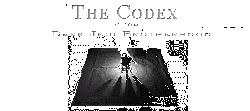
Dark Brotherhood Infrastructure
Dark Jedi of the Brotherhood
Rights of the Brethren
Lore
|
Dark Jedi Brotherhood History
In the Beginning
Nearly twenty-five thousand years before the destruction of the Death Star at the Battle of Yavin, the First Great Schism of the Jedi Order occurred. The Kashi Mer Jedi Knight Xendor used his considerable powers to explore the Dark Side of the Force and was expelled from the Jedi Order. Summoning followers, Xendor created the first organized band of Dark Siders known as the Legions of Lettow. These followers, many of whom were once Jedi, broke free of the rigid dogma of the Jedi Order and touched upon their passions and emotions to fuel their power. Fearful of the freedom possessed by Xendor and his followers, the Jedi Council declared war upon the Legions of Lettow. The culmination of the First Schism occurred on Columus where Xendor fell and his Legions dispersed. As the leader of the first organized band of Dark Jedi, Xendor served as the predecessor to all those who would follow. Millennia after his death, his successors would conquer the Sith species and become the Sith Lords. It is through Xendor that the Dark Brotherhood claims its legacy. We pay him homage for his foresight into the true nature of the Force and his courage to break free of the dogmatic chains of the Jedi Order.
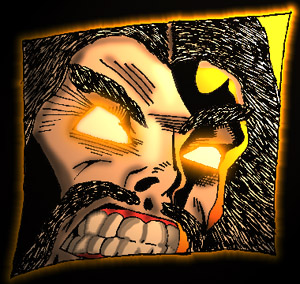 Grand Master Jedgar Paladin
Grand Master Jedgar Paladin
Building upon the foundations of Xendor and his Legions of Lettow, a small cult left the Sith Empire in 5050 BBY. Following a pure-blood Sith known as Okemi, the group discovered a sector on the outskirts of the Sith Empire. Guided to the system by the Dark Side of the Force, Okemi established his seat of power on Antei, the fourth planet in the system of the same name. On the planet of Antei, Okemi and his followers discovered temples built by the first inhabitants, a race of sentient near-Humans. Okemi and his Sith followers subjugated this race, and turned them into a society of slaves, much as his own Sith had been subjugated by Human Dark Jedi. For over 1,500 years, the Anteians built temples to honor their Sith Gods and established a potent aura of darkness throughout the system.
Cloaked in legend, Okemi’s reign on Antei blends both fiction and reality. Records indicate that Okemi ruled for over a 1,000 years in the Antei system; however, Krath scholars have theorized that the most powerful of Okemi’s followers would assume their master’s name upon his death. One fact that remains certain is that in the year 3950 BBY, a powerful Sorceress named Tiamat, following her Force-fueled dreams, discovered Antei. Tiamat was amazed at the wealth and immense power Okemi had created over the past millennia. The original native species had bred into the Sith populations and a world-wide civilization with Okemi as its theocratic head had formed. Guided by portents in the Dark Side, Okemi accepted Tiamat into his fold and the two formed an alliance of power.
The alliance, however, was not yet complete. Okemi and Tiamat reached out to an assassin of terrible power named Ferran. Ferran was a Sith Cultist from the Mecrosa Order, his life devoted to the art of war. Traveling from his home of Corellia, Ferran joined Tiamat and Okemi and the Triumvirate was born. Together they would create a temple housing what would later come to be known as the Star Chamber. The Triumvirate would expand their power from the planet of Antei to the other planets in the system.
The Star Chamber stood as the center of their power, augmenting their ability in the Force and granting powers beyond imagination. The Triumvirate basked in their glory until around the year 2950 BBY when Tiamat lost control of a ritual designed to harness the power of stars. Ferran opposed the ritual from the start, believing it to be too dangerous. However, Tiamat plied Okemi with her wiles until the warrior gave his consent.
The ritual itself focused on Antei’s primary star, Ante. It was to create a conduit to the near limitless energy offered by Ante’s churning nuclear furnace that could be channeled directly through Tiamat’s understanding of the Dark Side of the Force. Unfortunately, for her and the rest of the Triumvirate, her attempt at manipulating forces on the cosmic scale failed miserably.
No one knows what exactly caused the ritual to fail. Many say that Tiamat was too weak to control the forces she meddled in; others say that Ferran’s treachery caused an otherwise successful ritual to fail. It is known that once opened, the sorceress found she could not control nor close the gateway to Ante’s burning heart. Unchained from the universe’s governing principles by the witch’s dark magic, the star became a monster with fuel and energy enough to rend the very system. Ante burned the remainder of its life’s fuel at a maddening rate to escape Tiamat’s desperately failing grasp. Were it not for the witch’s hold, the star would have burned its children to ash. However, there is evidence that suggests Tiamat had begun to regain her hold on the ritual and that it was Ferran’s panic that destroyed the Triumvirate.
Whatever the truth, the few surviving followers of the Triumvirate arranged themselves into three Orders, called the Tripartite Path. It is from these followers that the modern day Dark Brotherhood derives our three orders. The Krath, sorcerers and conjurers who pay homage to Tiamat; the Obelisk, warriors who devour entire armies and worlds alike in the vein of Ferran; and the Sith, master strategists bent on domination and ruling from the Iron Throne like Okemi before them.
For nearly three thousand years the descendants of Okemi watched events in the galaxy, biding their time, waiting for the moment when they could usher in a new Era of Darkness. When the Clone Wars ended with the birth of the Galactic Empire they felt their time had arrived. A single emissary of Okemi’s followers approached the young Imperial Dark Adept, Kane Vader. In secret, Kane would assume the mantle of Grand Master and Lord of the Star Chamber. Utilizing his connections within the Galactic Empire, he used his considerable resources to recruit from within the Imperial ranks. The followers of Kane Vader would swell as Kane secretly positioned himself to replace Palpatine. The son of Anakin Skywalker would usher in this period much sooner than expected when he slew both Palpatine and Darth Vader and effectively ended the rule of the Empire.
After the smoldering ashes of the Empire cooled, Kane Vader sought to secure his position by allying with remnant Imperial factions. These factions would offer the nascent Brotherhood a military arm and the ability to expand their influence. Dispatching his apprentice, Master Jedgar Octavius Paladin to the Outer Rim, the Brotherhood would align with the self-promoted Imperial Grand Admiral, Stefan Ronin. This marriage of convenience would serve both the Brotherhood by offering it military might, and Ronin’s Emperor's Hammer by offering it a cadre of Dark Jedi. Once this alliance was established, Kane Vader, used to ruling in secret, left for parts unknown, appointing his apprentice as his successor. Kane Vader’s expansion of the Brotherhood from a hidden society to open might would remain his lasting legacy.
Birth of a Legacy
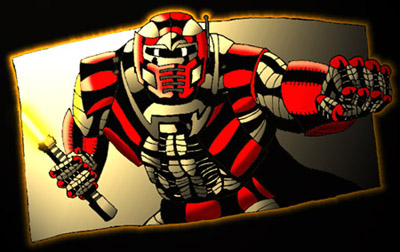 Grand Master Kreeayt Havok
Grand Master Kreeayt Havok
Paladin became one of the most dynamic and influential Jedi of the Brotherhood. Two of the ancient Orders, the scholarly Krath, and the pilots of the ferocious Sith dominated. Flying missions with the Imperial fleet, they slowly pushed their reach beyond the borders of their system and the dark moon of Eos. Paladin established the Dark Council as the ruling body of the Brotherhood, his circle of advisors and administrators of the rapidly expanding organization. He inducted over a hundred new Apprentices, teaching them the ways of the Dark Side after establishing the Shadow Academy, the first school of the Dark Side in over five thousand years. As all things do, time passes. Paladin, satisfied with what the Brotherhood had achieved under his rule, departed to find his Master, and pursue his own arcane knowledge, leaving the position of Grand Master to his capable apprentice, Kreeayt Havok.
Havok had been one of the officers of the Empire when Paladin sought the alliance, and he quickly recognized the latent potential in Havok. Having served as Master at Arms and Headmaster of the Shadow Academy, Havok was familiar with the administration of the Brotherhood, but he lacked the vision to accomplish anything truly noteworthy. His reign was one of methodical expansion and refinement of their studies, with Dark Jedi establishing their own domains across the Imperial territories. He destroyed opposition without mercy, and generally reigned with marked stability. Modern scholars wonder if he saw the coming storm in his own Apprentice, a Dark Jedi whose name is known only as Crona.
The First Brotherhood Civil War
- Main article: The Other Uprising
Duplicity, considered by many Dark Jedi to be a profound trait, describes the reign of Crona. Through careful manipulation and deceit, he attempted to subvert the power of the Dark Brotherhood, he wasted precious resources and needlessly sacrificed dozens of our brethren for his own twisted ends. He resurrected the legacy of Ferran in the Order of the Obelisk, trained to be his personal army of deadly warriors. Yet despite this, many influential Jedi attempted to overthrow the Grand Master, and were violently put down in his mad schemes. In the end he must have foreseen his own demise, because in a final desperate act he hijacked the Imperial Dungeon Ship Lichtor V with his few followers, and fled the Imperial Territories.
History has dubiously referred to Crona as “The Other”. His actions had reached every corner of the galaxy; he defied the will of the former Dark Lords and the allied Fleet Commander of the Emperor's Hammer. Two former Dark Lords and a rising Master named Yoni sought to put an end to the chaos brought by The Other by finding a more suitable candidate for Grand Master. The three used their undue influence over the Fleet Commander to bring in one of their own: a loyal and charismatic Sith named Jac Cotelin.
Jac Ae-Sequiera Cotelin had survived The Other's vengeance despite being violently opposed. He led the forces of the Dark Council to hunt down The Other and his followers, eventually recapturing the Lichtor V. While The Other himself escaped, his followers were brought to justice. Recognized for his stellar service to the Emperor's Hammer and his adept ability to control the Force, Jac Cotelin ascended to the Iron Throne. After the dark days of The Other's Reign, Cotelin quickly reestablished order through the Brotherhood. After crushing plots by surviving disciples of the exiled Grand Master he took a step unprecedented in the Brotherhood. Realizing that he needed to solidify his base of power, and keep away from another revolt like the last Civil War, he divided the Dark Jedi into Clans, each overseeing a star system in the Imperial Territories. The Dark Lord then, with the assistance of his predecessors, reestablished the centuries-old Star Chamber to govern the Clans from afar. Using the Clan system, Cotelin created conflict among the Dark Jedi, both to stimulate their own strength through competition, and to keep them from uniting against him.
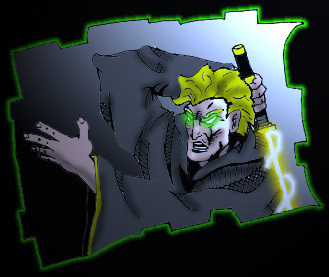 Grand Master Justinian Khyron
Grand Master Justinian Khyron
Eye of the Hurricane
While Lord Cotelin was universally feared and respected by the Brotherhood, his inability to divert from his studies kept him further astray from the Dark Council. Cotelin eventually stepped down to pursue his own research, and the Star Chamber chose his Apprentice, Master Justinian Khyron, as his successor. Khyron rode a wave of success in the beginnings of his reign. The Jedi adapted well to the Clan structures and the Brotherhood prospered under the Dark Council’s new leadership. However, Khyron’s reign would find the taint of the The Other still lingering. The Other had manipulated the Jedi of Clan Ar'kell into a carefully orchestrated campaign of chaos. Waves of assassinations and disappearances preceded the defection of the Clan as a whole to a small cult in the deepest parts of the Core. Khyron knew that he must prevent another such event from crippling the Brotherhood, and commanded his finest warriors to establish the Grand Master's Royal Guard. This cohort of elite warriors was trained to have unwavering devotion to the Dark Lord of the Sith, defending his person and his Dark Council from assassination attempts and kidnapping by any treacherous elements. Like so many Grand Masters, Khyron too departed for his own studies and solitary exploration of his powers believing he had accomplished all he could for the Brotherhood. However, it would not be long before the Iron Throne would call to him again.
Grand Master Stryker is one of the shortest reigning, and least remembered Grand Masters. As Khyron’s apprentice, he served in the shadow of that enigmatic and powerful figure. His reign only saw the eruption of conflict within the Clans. Khyron returned at the end of the Second Great Jedi War, again taking his place on the Iron Throne. Khyron’s second reign was one of continuing expansion and stability. Over a thousand Jedi filled the ranks of the Brotherhood, and the Super Star Destroyer Avenger was commissioned to serve as the war machine of the expansion. Having seen the conflict that erupted during Stryker’s reign, Khyron built upon the foundations of Lord Cotelin, and divided each Clan into three Houses, each house aligned into one of the three Orders. This division stabilized the clans, and would prevent any further uprising like those of Clan Ar’kell. Khyron demonstrated that he was still a powerful figure in the Brotherhood, his brief interlude seeming to solidify his position. When Stryker vanished shortly thereafter, Khyron’s next apprentice was Master Thedek.
Thedek's reign was untroubled by any fell circumstances, heralding one of the most stable periods in the history of the Brotherhood. The Grand Master was a legendary organizer, and he used his talents to centralize all the Brotherhood’s records for the first time. Any Jedi with sufficient access could obtain all the information necessary to their function. Most of the records of the Krath Order were even holo-recorded, allowing an unprecedented period of research and development among the Dark Jedi. The basis of Lord Thedek’s archival system is still used to this day, though it has undergone several redesigns since the troubled times that immediately followed his reign.
The Darkest Nights
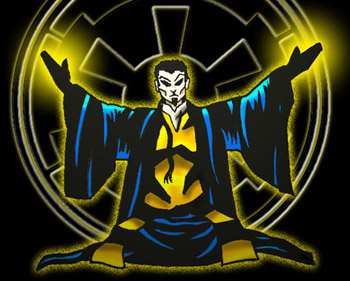 Grand Master Chi Long
Grand Master Chi Long
Upon Thedek's abdication of the Iron Throne, the members of the Star Chamber were engrossed in petty infighting; these actions resulted in the Dark Council calling upon the Warlord of Clan Tarentum, Archibald Zoraan, to ascend the Brotherhood's seat of power, even though his service to his Clan as Consul was marked by extensive absence and neglect. His reign began with controversy, with his selection of Epis Torquemada as his Apprentice and Deputy Grand Master. This sparked warfare amongst the Clans as each tried to take advantage of the emerging situation, or demonstrate their loyalty to the Iron Throne. After the Dark Council had suppressed the warfare, the Grand Master retreated to his private chambers for months at a time, engaging in bizarre studies in a specially constructed observatory at the peak of the Dark Hall. When several outspoken members vanished under mysterious circumstances, and after a particularly lengthy period of absence by the Grand Master, the Clans Taldryan and Naga Sadow openly declared rebellion against the Grand Master, beginning one of the bloodiest battles in Brotherhood history. When the Emperor’s Hammer intervened, and agents of the Clans stood ready to depose the Grand Master by force, Zoraan used his abilities to destroy the Dark Hall in a violent Force Storm that raged out of control. Zoraan was presumably killed in the ensuing chaos, which left the Dark Hall, dozens of Dark Jedi, and thousands of years of historical artifacts and records in ruin.
With the Star Chamber falling to ruins, and the Emperor’s Hammer coming to power within the Brotherhood, there was a long period of time without a Grand Master. For months after Zoraan’s fall, various Jedi pursued the title of Grand Master, but it was the enigmatic Chi-Long who finally succeeded all others. The Tribune of the High Court and powerful Prophet of the Dark Side stepped forth and imposed strict order within the Clans, taking radical steps to ensure stability while the Brotherhood reconstructed itself. Under his supervision, the Dark Hall was rebuilt into a complex that better suited the needs of the powerful organization, but at the same time, he faced difficulties with the fleet the Brotherhood had attached itself to for so long. The Fleet Commander had tasted some of the power of the Brotherhood during the conflict of Zoraan’s reign, and his Command Staff was not ready to relinquish their influence and actively sought to impose their own motives on the Dark Council. Like many of the former Grand Masters, Chi-Long was a long-standing and highly placed Officer in the Fleet, but after a string of Apprentices resigning, the Grand Master himself finally departed for parts unknown with the reconstruction of the Brotherhood’s power-base still incomplete. Once again, the Fleet Command Staff stepped in, bringing the Brotherhood more carefully under their control in the ensuing power vacuum.
The Second Brotherhood Civil War
- Main article: Exodus
Grand Admiral Ronin thought that his grip on the Brotherhood was complete, when the Sith High Warrior, and Commander of the Avenger Task Force ascended to the Iron Throne. This warrior was known only as Firefox. Indeed, even his selection of an Apprentice, the Executive Officer Astatine, seemed to echo those sentiments, for both Firefox and Astatine were not supported by any of the former Grand Masters or the fallen Star Chamber itself. Behind the scenes however, dissension was brewing. The Fleet Commander of the Emperor’s Hammer became increasingly insular, meeting only with his Executive Officer and his closest advisors. Slowly, the Emperor’s Hammer began to decline as Astatine took control of the most minute details with Ronin’s ignorant approval. Dozens of influential and highly placed Officers resigned or disappeared, and even more were sent before the High Court for show trials before their executions, culminating with the resignation of Lord Paladin as High Inquisitor. Lord Firefox began to secretly assemble the necessary resources for a complete separation of the Brotherhood from the Emperor’s Hammer. For months he gave the outward appearance of total compliance to the Empire. When Astatine resigned as Deputy Grand Master under mysterious circumstances, the first glimmers of rebellion began to shine through. At the prompting of strange dreams, Firefox dispatched loyal scouting patrols under the command of Krath Elders to the Outer Rim Territories. This team found the remnants of the Empire of Okemi, and the star that had destroyed the original leaders of the Star Chamber, still pulsing with Dark Side energy. Firefox knew this was the future home of the Dark Brotherhood.
As he prepared for the final departure, Firefox established what would come to be known as The Seven. Together with six of his most trusted advisors, including former Grand Masters Jac Cotelin, Justinian Khyron, and Chi-Long, as well as, Elders Corran Force, Pyralis and Trevarus Caerick, The Seven petitioned the Fleet Commander for an amicable release. Brimming with fury, the Fleet Commander ordered that the Brotherhood forces be held in the Imperial Territories at all costs, and threatened execution to those officers who did not immediately resign their status within the rebelling Brotherhood.
As the Dark Brotherhood departed, they sabotaged all facilities they had left behind, while the Grand Masters shrouded the Force, denying those Jedi who had remained with the Empire access to the Dark Side for the duration of their escape. This allowed the Clans time to gather their resources and destroy remaining structures and equipment.
Of the thousands of Jedi who had once sworn loyalty to the Iron Throne, only a fraction remained with the Emperor’s Hammer, including most of Clan Alvaak.
Tempest Bravo
- Main article: Tempest Bravo
The Exodus stripped the Dark Brotherhood of much of her military forces; however, Grand Master Firefox had foreseen the Exodus and put into plans an operation known only as Tempest Bravo. Intelligence operatives acting under the direct orders of Grand Master Firefox infiltrated Imperial logistical and financial centers. These agents, often Imperial Admirals, remained black for two years until they were activated hours before the Exodus. Acting under preset orders the infiltrators altered logistical supply routes and redirected financial payments to Dark Brotherhood assets. Within hours the operatives of Tempest Bravo laundered billions of Imperial credits to the Dark Brotherhood and secured our financial independence.
The Return of Cotelin
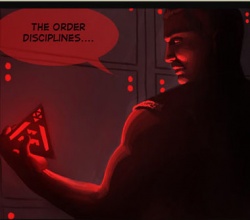 Grand Master Jac Cotelin
Grand Master Jac Cotelin
With order and stability restored, Grand Master Firefox stepped aside for former Grand Master Jac Cotelin to once again assume the mantle of leadership. This move was greeted enthusiastically by the Star Chamber and the Dark Council. With Cotelin, the Dark Brotherhood would have one of the most powerful and respected Grand Masters to lead them into the future.
Lord Cotelin’s second reign would last from 21 ABY to 25 ABY and would mark a period of expansion. Cotelin’s policies would reshape the Dark Brotherhood for years to come with sweeping changes to the Dark Council and a controversial decision to crush the Order Leaders and combine the Clans of Satal Keto and Exar Kun to form Clan Plagueis. Though these changes were not lauded by all who witnessed them, they were a statement that the Dark Brotherhood would not remain stagnant and would continue to evolve.
The Exile and the Exiled
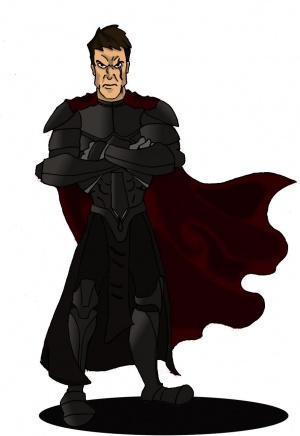 Grand Master Aristan Dantes
Grand Master Aristan Dantes
No stranger to controversy, Grand Master Cotelin would appoint his second apprentice, the Dark Jedi Master Sarin, as his successor. Sarin, the highest ranking defector from the Emperor’s Hammer was a controversial figure in his own right due to his defection coming two years after the Exodus. Unwilling to lower himself and give up his rank of Master, Sarin was the last of the Emperor’s Hammer’s Dark Jedi to retain his rank. Despite this controversy, the Star Chamber and the Dark Council voted unanimously in favor of his ascension to Grand Master.
Utilizing the momentum of the sweeping changes introduced by Cotelin, Lord Sarin enacted several precise policy changes early in his reign. The Grand Master’s Royal Guard, a relic of the past, was closed and the Society of Envoys quickly followed. Multiple lesser positions not worthy of Dark Jedi were removed from the rolls as new automation systems made their duties obsolete.
In 27 ABY, Sarin called the Clans to the Antei system for a military exercise codenamed Second Darkness. Despite the Star Chamber's faith in the Shroud to protect them, the same could not be said for the Clans' own systems. The Dark Lord used the event to assess their readiness and identify among them where there was weakness, but also strength.
Immediately after the Second Darkness military exercise had concluded, the Yuuzhan Vong attacked the combined Dark Brotherhood Fleets at the edge of the Shroud. The initial assault was a crushing defeat for the Brotherhood that splintered the fleet and forced the Clans to flee into the Shroud to fend for themselves. Following the bloodiest battle in the Dark Brotherhood's history, and the subsequent internecine struggle, the Dark Council was forced to abandon the Antei system with Grand Master Darth Sarin initiating the Braata Option and signaling a full retreat.
Utilizing this opportunity, Sarin released his plan to refit the Dark Brotherhood's fleets based on the performance of the Clans. Much maligned, this program rewarded all of the Clans but none more so than the First Clan, Clan Taldryan.
Over the next several years Sarin would usher in an era of order and relative calm that the Dark Brotherhood had not seen in several years. Sarin’s methods of quelling storms before they began offered a new strategy to Grand Masters to follow.
Reign of the Lion
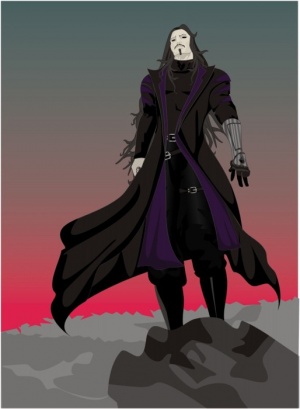 Grand Master Muz Ashen
Grand Master Muz Ashen
With Sarin at the Brotherhood's helm, the reclamation of Antei was imminent. The entirety of the Brotherhood's forces were culminated into one mighty mass to rival what they believed to be the remaining Vong forces on their once home planet. By the time of their arrival, however, it was discovered that the once powerful species had died out and that a force of Jedi, led by Omancor Crask, had taken the dominion as their own. The events following would become known as the Ninth Great Jedi War, resulting in the successful defeat of the light siders and the retrieval of Antei. Despite various noble structures having been destroyed, the Iron Throne was once again back home, with Muz Ashen succeeding Sarin as Grand Master.
The beginning of the Lion of Tarthos' reign was marked by great turmoil within its clans, beginning with the introduction of the new Independent House Revan. The Rite Supremacy known as the Spoils of War would be announced shortly thereafter, with the Brotherhood's armies vying for Salas V, a planet overrun by Killiks. While Revan honorably won the Rite, the number of sabers built to signify the passage of Dark Knights were beginning to dwindle. The noble clans of the Brotherhood were beginning to weaken due to lost numbers from the prior carnage, and an Order War in the form of Disorder erupted for the first time in several years. Ashen had no choice but to awaken the clans to their predicaments, and in order to do that, he called for the demotion of all the clans into houses. Only when they proved themselves worthy would they retain their former titles and rewards.
The moon of Lyspair had been reclaimed for the Shadow Academy, allowing new initiates access to the Brotherhood, but a new threat was arising on the planet of New Tython. It appeared that Jedi and Jedi sympathizers had gathered to form House Odan-Urr, creating a government for the Harakoan-inhabited word. The news of the Jedi struck a bitter chord with the Brotherhood, but Ashen had other plans. To the shock of the Dark Council, he allowed Odan-Urr's disciples to stay on New Tython, provided that the dominion itself was owned by the Brotherhood. The growth of the Jedi's power and the redemptions of various members of the Brotherhood spurred on the Invasion of New Tython, or the Tenth Great Jedi War, in which the Brotherhood reminded the Jedi of who was the most powerful. It was during this war and the last war that Arcona arose to be the First Clan, causing Taldryan to fall back for the first time in years.
Under Ashen, houses soon began to reclan, and the Brotherhood was growing stronger once more. His rule brought on changes to the Dark Council, with the introduction of the Voice and Fist of the Brotherhood. The Grand Master's Royal Guard was brought back to life and given new vigor, and Ashen's Deputy, Halcyon Taldrya, was able to carry out the execution of his long-hunted brother Michael. The swelling prosperity, however, was rivaled by multiple prominent deaths, including that of Sarin, the former Grand Master himself.
Trivia